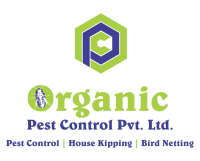
Business Description
Water treatment plantWhen wastewater (water that is no longer suitable for its current use) exits buildings through sewage pipes, it travels to a water treatment solution. Many kilometres of underground pipes make up the sewage system, which transport wastewater to a treatment facility for extracting. At the treatment facility, commercial, residential, and industrial wastewater is collected and put through a number of methods in order to produce safe, clean water.
Types of Water Treatment Facilities
1. Wastewater Treatment Plant (WWTP)
Wastewater is water that comes from water utilized for home, agricultural, industrial, medical, or transportation purposes. Basically, there are two types of wastewater: Sewage water - This is the waste water produced by residential appliances such sinks, showers, and toilets. While sewage water is made up absolutely of sewage, industrial wastewater is made up of waste from manufacturing, industrial, and commercial activity.
Applications:
The majority of petrochemical, chemical, or petroleum cleaner generate a lot of wastewater and need on-site wastewater treatment facilities. A significant amount of wastewater is produced by other industries, such as the manufacture of paper and pulp.
2. Sewage Treatment Plants (STPs)
These facilities eliminate pollutants and sewage waste from homes, businesses, and sometimes even from other businesses. Rainwater and sewer-related debris can also be deposited there. By cleaning wastewater using a variety of chemical, physical, and biological processes before releasing it into the environment, STPs play a crucial part in conserve the health and safety of locals. Treatment facilities seen in large cities are a fantastic example of STP. Residential dwellings, commercial structures, sewage from local governments, etc.
3. Effluent Treatment Facilities
Sewage treatment facilities, as previously mentioned, offer beginning treatment for domestic or municipal needs. On the other hand, effluent treatment plants are quite the contrary because they handle industrial effluent, or wastewater that answer from the flow of industrial by products.
Applications: ETPs are employed in industries like pharmaceutical manufacture and chemical industries like textile and dye manufacturing where wastewater is extremely and extensively contaminated by chemicals.
4. Treatment Facilities for Demineralization (DM)
Demineralization is the total removal of dissolved solids or minerals from feedwater (i.e., deaerated water that is delivered to a boiler from a tank for change into steam) or process streams in the process of treating water for industrial uses. Applications: Demineralization completely removes minerals from the water and is typically used in sectors that demand extremely pure water, such as the food and potable sector, high-pressure boiler feedwater, and process streams used in the production of electronics. Additionally, they are employed in enterprises to produce steam, power, and cooling.
5. Water Treatment through Reverse Osmosis
Reverse osmosis (RO) is a filtration process that removes a significant amount of pollutants and impurities from wastewater by applying force to it while it is on one side of a membrane.
Applications:
In order to comply with water safety needs, water quality standards must be met by any wastewater treatment facility. We now have access to safe, clean drinking water that comes directly from the faucet thanks to this continuing process.







